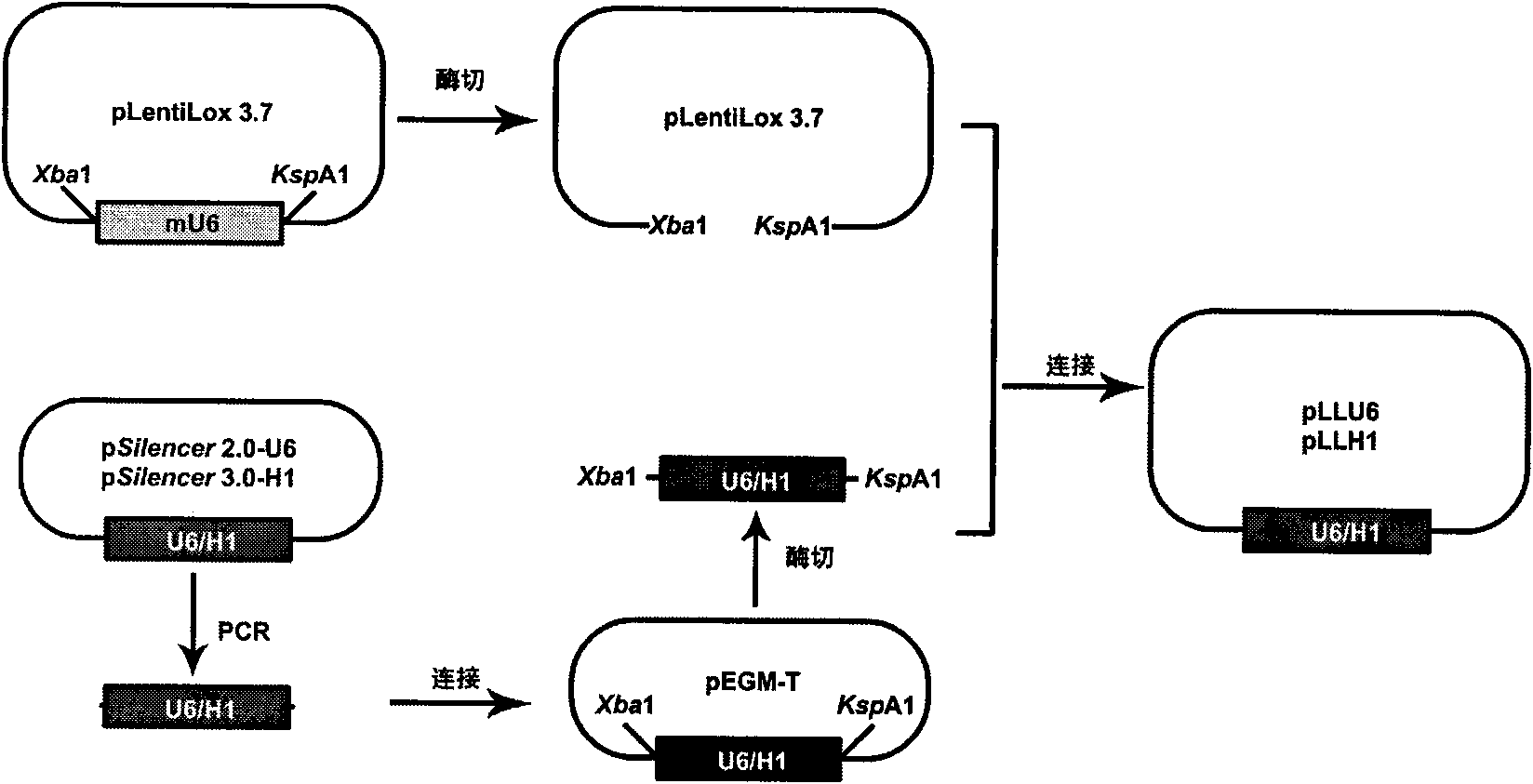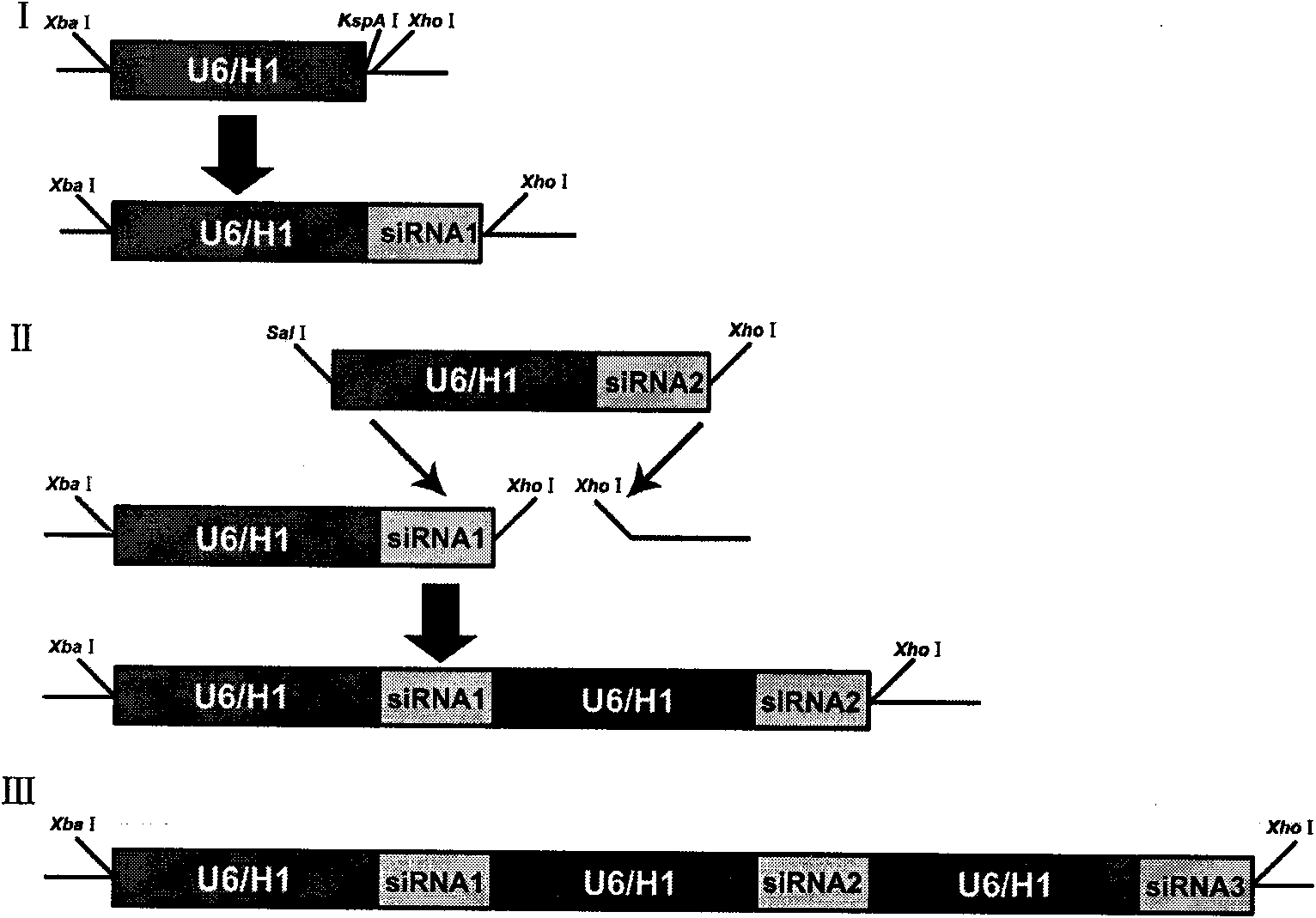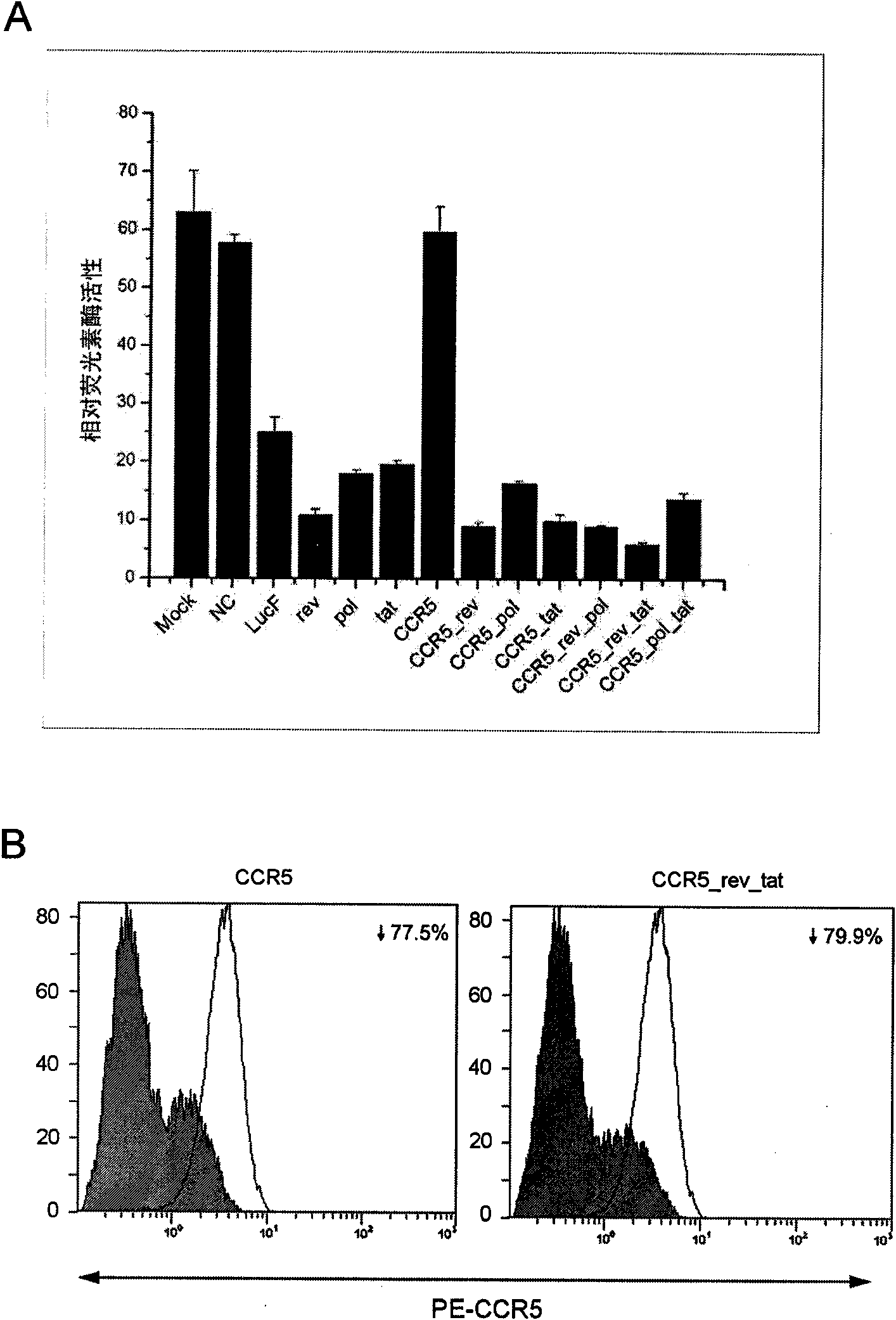Method for constructing tandem expression small interfering RNA recombinant lentiviral vector
A lentiviral vector and recombinant lentivirus technology, applied in the field of molecular biology, can solve the problems of silencing multiple target genes at the same time, which is not suitable, and achieve the effect of preventing or delaying virus escape, avoiding loss, and easy directional insertion.
- Summary
- Abstract
- Description
- Claims
- Application Information
AI Technical Summary
Problems solved by technology
Method used
Image
Examples
Embodiment 1
[0044] Example 1: Promoter modification of lentiviral vector
[0045] The lentiviral vector modified by the applicant is pLentiLox 3.7 (Rubinson and Dillon, Nature Genetics, 2003). The vector contains a mouse U6 promoter to control the expression of siRNA, and also contains a reporter gene EGFP for flow cytometry sorting. In order to avoid homologous recombination caused by a single promoter of the tandem siRNA, resulting in the loss of the siRNA expression box, the applicant replaced the mouse U6 promoter of the vector with a human U6 promoter and a human H1 promoter (human U6 promoter and the human H1 promoter were obtained from Ambion's products pSilencer2.0_U6 and pSilencer3.0_H1 by PCR), and the transformed lentiviral vectors were named pLLU6 and pLLH1 respectively (Escherichia coli Stbl3 / pLLU6 CCTCC M209135; Escherichia coli Stbl3 / pLLH1 CCTCC M 209136). For the schematic diagram of promoter transformation, see figure 1 shown. The specific transformation process is a...
Embodiment 2
[0061] Example 2: Construction method of tandem expression siRNA recombinant lentiviral vector
[0062] 2.1 Construction of single-target siRNA recombinant lentiviral vector (see figure 2 Step I)
[0063] 2.1.1 Chemically synthesized oligonucleotide chains, the format is as follows:
[0064] Sense strand: 5'-(19N)-(TTCAAGAGA)-(N91)-TTTTTTTC-3'
[0065] Antisense strand: Complementary to the sense strand with TCGA added at the 5' end to create Xho1 cohesive overhangs
[0066] Note: 1) 19N represents the 19-base sequence of the siRNA target, and N19 represents the reverse complementary sequence of 19N;
[0067] 2) (TCAAGAGA) guides the generation of the "loop" region of the siRNA precursor shRNA (small hairpin RNA), which sequence is selected from (Brummelkamp et al., Science, 2002)
[0068] 2.1.2 Anneal the sense strand and antisense strand to form a fragment with Xho1 sticky end and blunt end;
[0069] 2.1.3 Ligate the above fragments to the vector pLLU6 or pLLH1 (the ve...
Embodiment 3
[0092] Example 3: Application example of lentiviral vector expressing siRNA in tandem
[0093] In order to verify whether the lentiviral vector expressing siRNA in tandem can work normally, the applicant explained with an application example of interfering with HIV:
[0094] In this example, the applicant selected the HIV genes rev, pol, tat and the host cell membrane protein CCR5 required for virus-infected cells as targets, and used the lentiviral vector for tandem expression of siRNA provided by the present invention to construct a single target Point, double-target, triple-target siRNA recombinant lentiviral vector. The combinations of siRNA expression cassettes are shown in the table below:
[0095] single target
H1 CCR5
U6 rev
U6 pol
U6
double target
H1 CCR5_U6 rev
H1 CCR5_U6 pol
H1 CCR5_U6 tat
Three targets
H1 CCR5_U6 rev_U6 pol
H1 CCR5_U6 rev_U6 tat
H1 CCR5_U6 pol_U6 tat ...
PUM
 Login to View More
Login to View More Abstract
Description
Claims
Application Information
 Login to View More
Login to View More - R&D
- Intellectual Property
- Life Sciences
- Materials
- Tech Scout
- Unparalleled Data Quality
- Higher Quality Content
- 60% Fewer Hallucinations
Browse by: Latest US Patents, China's latest patents, Technical Efficacy Thesaurus, Application Domain, Technology Topic, Popular Technical Reports.
© 2025 PatSnap. All rights reserved.Legal|Privacy policy|Modern Slavery Act Transparency Statement|Sitemap|About US| Contact US: help@patsnap.com



